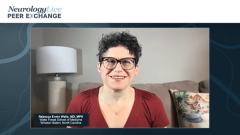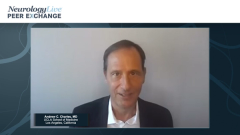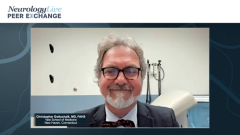
Migraine Preventative Treatment and Burden of Disease
Key opinion leaders explain the burden of disease that accompanies preventative migraine treatment.
Episodes in this series

Jessica Ailani, MD: Chris, I wanted to bring the idea of the burden of disease back to you.We know that the burden [of disease] is high and we know that there are many options out there but how do we start bringing the idea of therapy to the patient and prioritizing different types of options? How are we engaging that patient in that dialogue: “These are the options, and this is when we should think about acute vs prevention.”? Or, both acute and prevention and how we make these decisions.
Christopher Gottschalk, MD, FAHS: Those are the nuts and bolts of what we do every day. It’s having a conversation that frames for people why it’s worth having treatment and that they deserve it. I think the points both Rebecca and Stefanie brought up are so important. There is loaded language with headaches and the stigma surrounding them. To start with, most people don’t want to admit even for themselves, that this is getting in their way. [They may say to themselves,] “It’s just a headache. There must be something wrong with me if I’m letting headaches interfere with my life.” I often say to trainees and patients, “The World Health Organization has told us that migraine acutely is no different from quadriplegia.” So, there’s the problem. Anybody would go to a doctor in a minute and say, “Doctor, I’m quadriplegic twice a week for 6 hours, what do I do?”
But somehow saying I get a headache 2 or 3 times a week just doesn’t carry the same weight in anybody’s mind. Just to start with, acknowledging that we understand that migraine is the single largest cause of disability worldwide, that it constitutes more disability than pretty much all other neurologic illness combined, that that’s legitimizing and I think opens the door to say, “There’s no reason to put up with that.” That in the world we live in now with all the options we have, with the understanding and the advances in therapy that have occurred in the past 20 or 30 years, we can do a lot. We can make this a problem that goes from something that runs your life or something that you run from on a regular basis, to something that’s not frequent and that even when it does occur, it does not have to be the end of your day or something that causes you to cancel whatever activities you are doing.
I think when you acknowledge to people that all of those goals are things that we can meet and that we do every day, then it becomes an opportunity to discuss sort of how do you want to get there. Going through the options about the relative benefits, as Rebecca was saying, it’s a surprise to a lot of people that prevention doesn’t just mean not as many but not as bad. Often that’s the most important benefit. It just means that I’m not as likely to end up in an [emergency department], or I’m not as likely to call out of work. That would be huge. All of those are sort of opportunities for helping people understand not just what’s worthwhile but what the options might look like.
Jessica Ailani, MD: You mentioned some good points about not going to the emergency room and not calling out from work. I think these are important ideas of what success is. We talked about goals, being more present and making it to events. It’s important to think about how we measure success. I think this is a pit I fall into a lot. I measure success because I have an idea of, “Oh, yeah, I think they’re doing pretty well.” It’s so hard sometimes; I have to remember not to walk into the room after having the numbers on my paper. Like, “Oh, you’re [having] 3 [headaches] a month; this looks fantastic”; and just to remind myself that 3 a month is still pretty bad for some people, and 3 a month is fantastic for someone else.
Transcript edited for clarity.
Newsletter
Keep your finger on the pulse of neurology—subscribe to NeurologyLive for expert interviews, new data, and breakthrough treatment updates.








